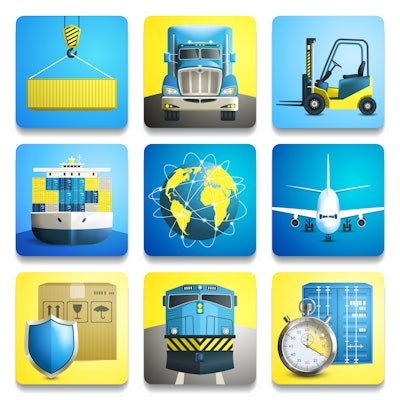
Of course manufacturers are keenly aware of the opportunities and risks related to their supply chains — these links are the driving force required to keep businesses running. The ability to ship and receive goods is the lifeblood that gets products to market. However, just how much broader global and regional supply chains impact local economies is often overlooked — especially when it comes to financing. In this article, we will examine how manufacturers can capitalize on government mandated electronic invoicing to realize internal efficiencies and benefit from supply chain and liquidity improvements — which can vastly improve the stability and efficiency of their local supply chains.
The Situation
Electronic invoicing is required by governments in dozens of countries across the globe, and nowhere is this government standardization trend more visible than in Latin America. Brazil launched the e-invoicing movement in Latin America in 2007, and since then seven other countries in the region have followed suit with similar legislation. While Latin America still has the most sophisticated requirements for financial processes, Turkey and Vietnam now have e-invoicing requirements in place, and European countries have begun enforcing mandates for business-to-government transactions. As the countries with these regulations continue to see increased tax revenue from the move to e-invoicing (Brazil’s tax authority increased its revenue by ~58 billion US dollars in 2012 because of its regulation enforcement), more governments around the globe can be expected to introduce their own versions of e-invoicing compliance regulations.
The Opportunity
In countries with mandated business-to-business e-invoicing requirements such as those in Latin America, all suppliers must use a standard government XML format that is transmitted and approved via government servers. This invoice often acts as a bill of lading that is required to accompany all shipments. Buyers must validate and approve the invoice and shipment in real time — often before goods are even unloaded. When invoices are submitted incorrectly or do not exactly match the shipment, this process can cause supply chain headaches. However, it can also streamline the inbound receiving process dramatically. In fact, companies who automate their receiving process based on these government requirements are realizing cost savings of up to 40 percent and increasing employee productivity by up to 50 percent.
These process improvements aren’t the only benefit of government standardization. E-invoicing requirements are accelerating the adoption of supply chain financing. Using supply chain financing, companies can strengthen their cash flow and supplier base by providing the option for suppliers to get paid early. While there are strong benefits to both buyers and suppliers, supply chain financing adoption is traditionally plagued by the ability for the buyer to easily approve an invoice for payment.
Traditional paper is too slow, leaving virtually no financing window, and current buyer-side focused e-invoicing networks require onboarding and a significant investment in convincing suppliers to transition from paper to electronic. Government mandated e-invoicing, however, eliminates both of these issues. Since all suppliers are required to send e-invoices using the same standard format, the government not only eliminates the onboarding issues, it creates an environment that accelerates buyer approvals from weeks to hours.
Although any manufacturer can implement supply chain financing anywhere in the world, focusing those initiatives on countries with standardized e-invoicing processes can more easily facilitate adoption, lowering the cost of payment processing for their companies while providing suppliers greater access to liquidity — and not just a small subset of suppliers, but all of their suppliers.
The benefits that manufacturing companies, their suppliers and economies can realize by leveraging e-invoicing to facilitate supply chain financing are tremendous. Buyers and suppliers can both better manage their cash flow through increased visibility into financial transactions. Buyers can automate payments once invoices are verified, and suppliers can simply login to an online portal to check the status of their invoices and select the ones which they would like to be paid immediately. Plus, with automated processing, costs associated with accounts payable and inbound receiving are reduced, resulting in cost savings on the buyer’s end.
The individual benefits of leveraging e-invoicing to facilitate supply chain financing are clear. Cost savings and improved cash flow management on the buyer’s end; liquidity and visibility on the supplier’s end. But perhaps even more impactful are the macro level benefits of increased adoption of this financing process. By increasing free cash flow in the market and stabilizing supply chains, buyers warrant that materials for their key manufacturing facilities are readily available. Ultimately, wider adoption of supply chain financing as a response to e-invoicing will improve liquidity and, therefore, positively impact economies in the form of greater purchasing power and ensuring the availability of supplies.
As e-invoicing requirements continue to spread globally, proactive manufacturing companies can leverage the required standardization to enhance internal processes and introduce supply chain financing to stabilize their supply chains. Ultimately, these processes will build up stronger supply chains, ensuring the availability of goods and enhancing their local economies.
Scott Lewin is CEO of Invoiceware International.
To read more manufacturing and technology news, sign up for our newsletter. You can also follow Manufacturing Business Technology on Twitter @MBTwebsite.





















